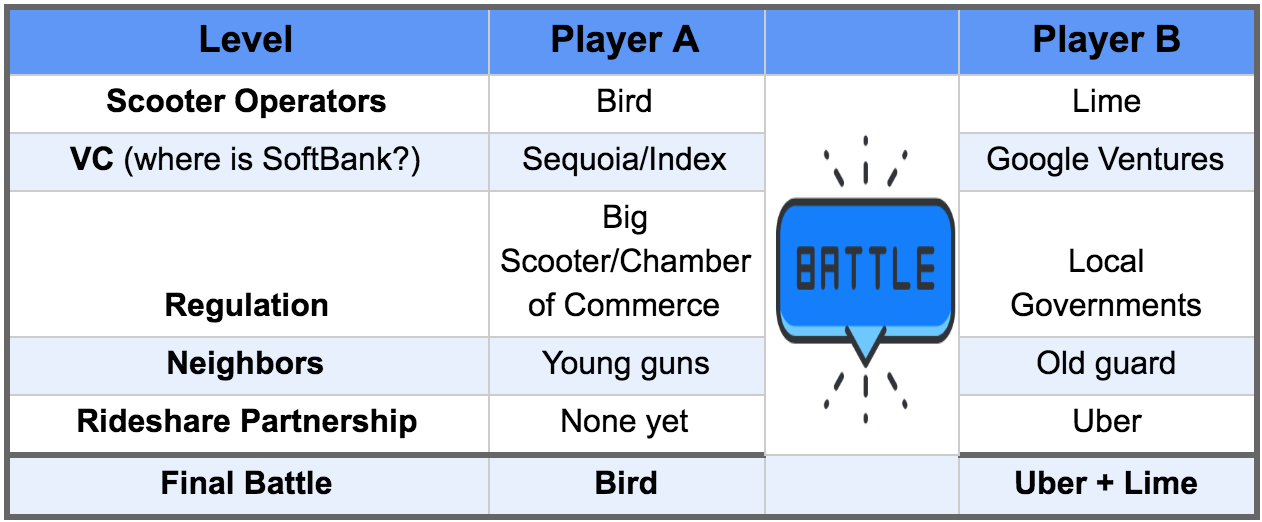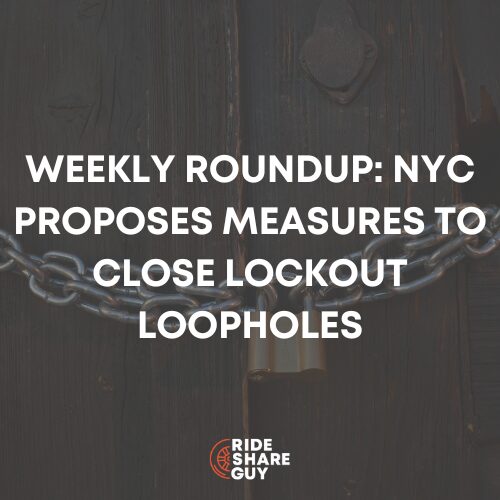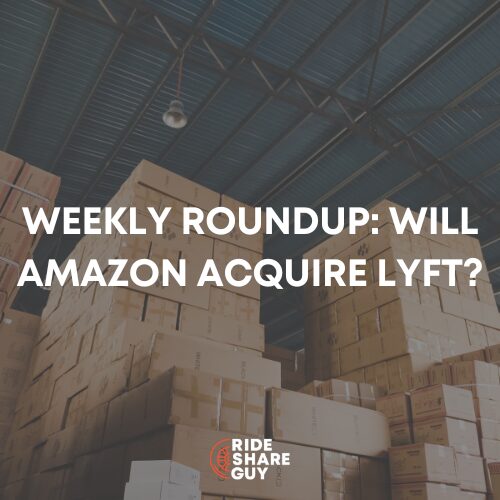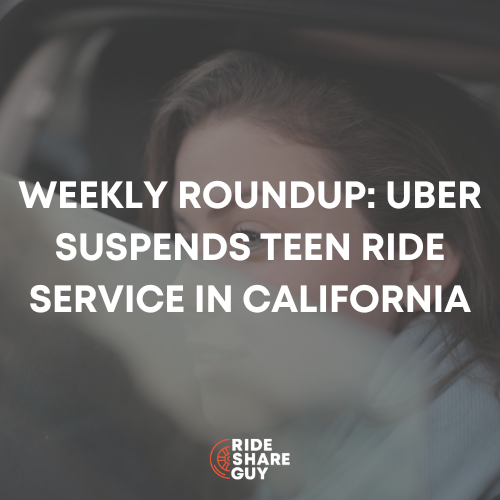
Welcome to the first issue of The Rideshare Guy’s Mobility Report. Written by the man himself, Harry Campbell, author of The Rideshare Guide, and Tom Mourmouras, founder of Naxos Mobility, this NEW Monthly Report will merge stories, headlines, and news in the world of mobility and ridesharing. Your authors will connect recent developments in transportation to the lives of real people–drivers, chargers, and gig workers–and provide insights unique to RSG’s community of hundreds of thousands of drivers.
Scooter Wars
By now, you’ve seen them in real life or on this blog. The two-wheeled electric vehicles have taken the U.S. by storm (except where forbidden by local authorities), and if consumer tastes are any indicator, are here to stay. There are two mono-syllabic leaders in the space: Bird and Lime, which have launched in dozens of markets in the U.S. and Europe.
Want to get the Mobility Report monthly? Subscribe below!
But these scooters have also created new lines of flexible contract work–chargers (cutely named juicers at Lime) and mechanics, thrown local regulators into multiple respective tailspins, and pitted neighbors against each other (if you only follow Nextdoor, you might think WW3 is brewing). Scooter Wars are being waged on several fronts:
Why are scooters worth billions of dollars?
Scooters have got the quadfecta when it comes to mobility options in the 3-mile-and-under division. They’re more reliable, cheaper, faster and fun than comparable rideshare options!
Uber and Lyft know that reliability, measured by driver ETA, is one of the most important KPIs for their orgs. But scooters, when supplied plentifully like in Southern California, have lower ETAs for their riders than Uber cars. Plus, there’s no way your scooter will get lost or circle around the wrong block for 10 minutes!
And when it comes to pricing, there’s no comparison on short trips, as Uber has a minimum fare of $5.60 (in Los Angeles for example) vs. Bird at just $1 + $0.15/min (everywhere).
Bird Charger Survey
Here at RSG Mobility, we have direct access and insights to hundreds of thousands of gig-economy workers, ranging from drivers and food couriers to scooter chargers and mechanics. As chargers are interacting with the actual scooters, customers and the public on a daily basis, they are some of the most knowledgeable people when it comes to this explosive industry.
Last week, we sent out a survey to over a thousand chargers nationwide and asked them a few questions. You can find the full survey results here and below we’ve shared some highlights.
Notable highlights:
- Chargers are picking up scooters most frequently from residential and commercial areas. Public transit stops lag far behind.
- Chargers estimate that most scooters last 4-6 months.
- Chargers overwhelmingly prefer working for Bird over Lime.
- 23% of Chargers also work for another on-demand service like Uber or Lyft.
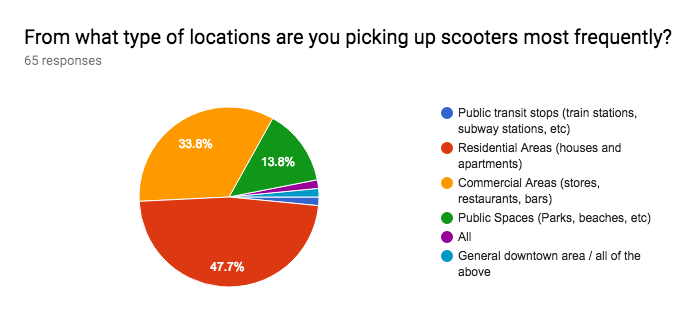
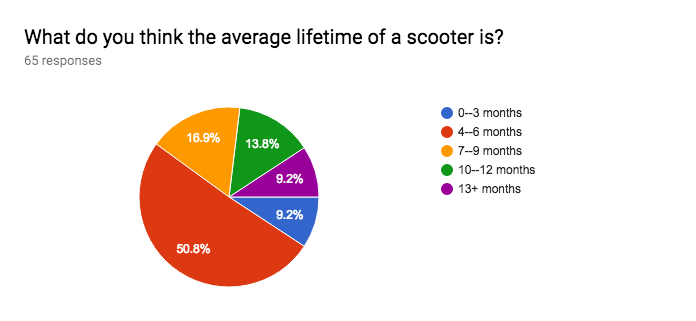
News + Product Updates
Uber boxes Cargo: The granddaddy of the rideshare companies is partnering with NYC startup Cargo to provide healthy and trendy snacks in vehicle-borne vending machines. We’ve seen the boxes at the LA Cargo launch and were impressed.
Lyft and Uber typically move in lock-step with new features and products, but Uber boxed out Lyft in this deal. Could Lyft have something similar in the works with Vendy, an identical, Florida-based startup founded by former Florida Lyft Operations Manager, Salomon Horowitz?
Amped for Spotlight: Recognizing random makes and models of your Uber is hard and if you ask a driver, pick-ups and drop-offs are the most challenging part of the gig. Lyft tried to solve this early on with a big, fuzzy pink mustache… until they shaved the ‘stache. Then they brought in the much-groovier glowstache, which evolved into the less-interesting-but-“more-IPO-friendly” and-confusingly-named “Amp”. Amp sits on a driver’s dash and lights up in various colors so the passenger can spot them – it’s actually pretty useful at busy places like airports.
Uber Spotlight, recently re-announced, operates in a similar fashion, with the added benefit that the rider can hold up her phone so that the driver can spot her. RSG believes these devices are training riders for a world of identical robo-taxis, where riders need to rely on unique lighting identifiers (as well as license plates) to find their autonomous taxi. Expect to see more products like this in the future, as there are numerous things that self-driving car makers are not thinking about yet.
Uber loses to NYC: An original promise of the ridesharing companies was that they would reduce the number of cars on the road… but anyone who has either (a) been forced to make a Supply x Demand graph in economics class or (b) spent one night driving passengers around can tell you that by reducing the cost of comfortable vehicle transport, Uber/Lyft have increased the demand for such transport and therefore added to–not reduced–the number of cars on our roads.
New York’s latest state budget adds $2.75(!) to the price of each single-passenger Uber/Lyft ride, $2.50 to each taxi ride, and 75 cents to each shared ride, like UberPOOL and Via. Congestion pricing is not new, but this pricing scheme targeting rideshare and taxi users/drivers is. Why would a rich guy driving his own Range Rover not pay this tax, when Uber riders (who may not have their own SUVs and cars) do pay? Uber launched a $1mm ad campaign in NY to fight the measures, but failed. NYC is capping the number of Uber/Lyft drivers by not allowing new drivers to register, and imposing a minimum wage for drivers. Remind you of the good-old days of yellow-cabs only?
Data-driven
We looked at the traffic to RSG’s most popular posts, and saw a clear winner in What it’s like to be a Bird charger. Check out the sustained and growing viewership:

200,000 page views over the past 5 months! That’s a whole lotta people who want to learn about scooters.
Get the Mobility Report delivered to you monthly! Subscribe below:
Your Turn to Drive
What do you think of the MobRep? (a.k.a. Mobility Report) (Maybe we shouldn’t try to make “MobRep” a thing). What should we change? What do you want to see next time? If you could ask drivers, chargers and couriers one question, what would it be? Let us know!
-Harry @ RSG
